Geotargeting advertising is a powerful way to reach the right people, at the right time, in the right location. When implemented properly, it lets you create personalised ads and content based on a user’s geographical location. This means you can resonate with each of your consumers, no matter where they are.
With the ever-increasing number of internet and smartphone users, businesses need to reach and engage with this geographically diverse audience. Offering the same generic advertising to everyone means not accounting for unique factors like locality, specific interests and behaviour. Geotargeting advertising solves the problem.
Read on to find out everything you need to know about geotargeting advertising, including what it is, how it works and how to get started with geotargeted ads today.
If you’re interested in getting started with local advertising with locally optimised and personalised digital advertising campaigns, then contact PlotProjects today.
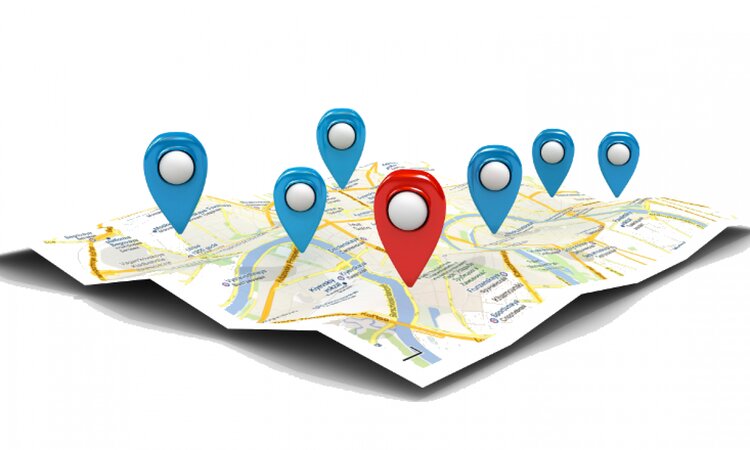
What is geotargeting?
Geotargeting is a way for advertisers to specify the location where they want their ads to appear. The idea is to create hyper-relevant marketing messages designed for local prospects, resulting in higher engagement and conversion rates. Also known as ‘location targeting’, ‘geographic targeting’ or simply ‘geo ads’, many of the major PPC platforms offer this option, including Google Ads, Facebook Ads, Instagram, LinkedIn and more.
The beauty of location targeting is that it uses location-based information such as shopper behaviour, demographics, interests and location to inform content and ads. This means that customers will only see content that applies to them, based on where they’re located. Users can be segmented by country, region, state, city or a smaller radius, and targeted with geographically relevant ads, website content, emails, mobile notifications and so on.
Not only will you get better results, but it can save you money. Without location targeting, your ads might show up in irrelevant locations, resulting in wasted impressions and clicks with no possibility of a return on your advertising spend. It’s no wonder that so many brands are using geotargeting advertising. According to a Location Based Marketing Association survey, 95% of global companies already use location-based data in their marketing strategy.
Benefits of geotargeting advertising
Many of us see dozens of websites and ads a day. Personalisation goes a long way towards influencing our behaviour and purchases. For example, an international brand might need different landing pages for different locations with different content, keywords and images that are locally relevant. Or a local store might run geotargeted ads to show local products and offers to people who are within a few miles of the shop’s location.
Almost nine out of 10 marketers say location-based advertising has increased their sales. It’s a proven and effective way to improve online traffic and foot traffic to your store. And it makes your ad budget go further because you can market to the right people every time. For instance, you won’t waste money advertising winter coats to people who live in Florida!
Using geotargeting advertising doesn’t mean you can’t use other location-based marketing tools to refine your campaigns. It can be layered in with other solutions such as geofencing, beacon technology and more to make your geo ads highly effective because you’ve selected the ideal audience who are most likely to convert.
Here’s a look at some of the many benefits of geotargeting marketing:
- Personalisation: With geographic targeting, you can design personalised ads and landing pages with local references to cater to customers in a specific area and increase engagement.
- Boosted sales: Providing a personalised customer experience is a proven way to increase sales and turn shoppers into lifelong customers. Geolocation marketing makes this possible.
- Online traffic: Keep people on your website and show them the relevant ad to make a sale, based on their demographics, location and shopping behaviour.
- Foot traffic: Show up in local search results and share local offers and deals with geotargeted ads to customers in the vicinity of your brick-and-mortar store.
- Reduced cost per click: Geotargeting ads will only get displayed in the areas where your potential customers are, not in the areas where they aren’t. You don’t waste time and money on consumers who have no inclination to buy.
- Local SEO: Geotargeting SEO can enhance your marketing strategy and boost your local SEO by creating more relevant content focussed on local keywords.
- Better return on advertising spend: Once you start tracking campaign performance by location you will find trends and segments that can boost your ROAS.
- Hide ads from your competitors: If you don’t want your competitors to see what you’re doing, you can hide your ads using a combination of geotargeting and IP exclusion.
- Better UX: Make users feel seen and heard in their language with relevant and engaging geolocation ads that they’ll remember.
- Location-based keywords: Give your ad budget more miles with specific location-based long-tail keywords. You might reach less people but you’ll reach the right people.
- Mobile, websites and search: Geotargeting advertising is especially useful for businesses that rely on foot traffic, proximity and deliveries in a certain location. It can be used for mobile geotargeting, local search or geotargeting on a website.
How geotargeting works
Geotargeting advertising works through IP addresses and other device identifiers. These provide the codes for a specific country, city, state or region, right down to the zip code. You can also determine a user’s location through device ID, Wi-Fi, GPS or other means. Once a website, app or other platform determines this location, the data is used to adjust the type of content the user views. For example, Google and Facebook recognise your smartphone’s location and send you geo targeted ads promoting businesses in your location. Similarly, when you search on the internet, you’ll be served the most relevant search results for your geolocation.
Many marketing and social media platforms give the option to create location-based ads. For example, Google Ads geotargeting advertising lets you easily specify a location or set a geographic radius to display targeted ads, like around your restaurant or retail store. Social media geotargeting is also possible on Facebook and LinkedIn to name just a few. The technology can be easily combined with other location-based technologies such as beacons and geofencing for even greater location accuracy, such as near or even inside a store.
But it’s not all about paid PPC or social media geo ads. There are plenty of ways to set up geotargeting advertising organically, such as optimising your website for local search, using location-based keywords and creating local landing pages. If you do it well, it will naturally improve your position in search engines so that customers who are looking for you can find you. You can learn how to do this in our guide to hyper-local marketing.
Geofencing vs geotargeting
When referring to location targeting you will often see other terms like geofencing and beacons used interchangeably. While they can all be used in location-based targeting, they are different technologies that are used slightly differently.
Geofencing is focussed on creating a virtual geographic boundary known as a geofence which triggers location-based ads and notifications when a mobile user crosses the boundary. For instance, if a grocery store wants to increase foot traffic at its new branch, it could geofence the new store and show ads to mobile users within a specific radius around that location.
In contrast, beacons are physical Bluetooth transmitters than can be set up in-store or at events to detect when a customer is near. For example, beacons can trigger a mobile add to anyone in a certain part of a department store or at a particular part of a festival or event. Because they are powered by Bluetooth, they work well, even when there’s no Wi-Fi available.
Both of these technologies can be used to enhance your location targeting campaigns, however, geotargeting takes them a step further by factoring in things like shopper behaviour, demographics, interests and location. This makes the user experience even more personalised and relevant.
If you’re thinking about getting started with geotargeting, a good option is to work with a provider like PlotProjects who offers all of the technologies you’ll need. If you’re interested in getting started with location targeting with locally optimised and personalised advertising campaigns, then contact PlotProjects today.
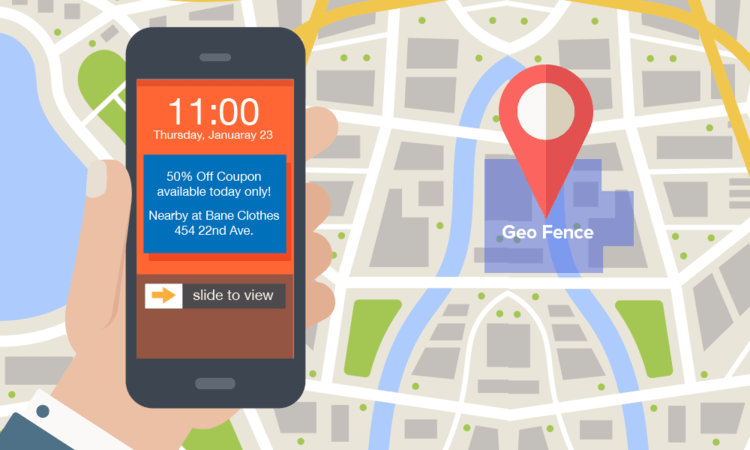
Types of geotargeting advertising
There are various parameters you can use when setting up geotargeting advertising and marketing, these include past shopping behaviours, location or even weather targeting. You can also get more specific and precise with radius targeting.
Radius targeting
Radius targeting is an ideal tool for when you want to target users in a very precise location. Many advertisers use this technique to appeal to people in a specific place who might be interested in their business. For example, a luxury car dealership might want to target people who live in a high income geographic area.
You can also use it to hyper target your ads, for instance, a local restaurant can run their geotargeting ads in a certain location, to a certain group of people, at a certain time. By combining these targeting elements, a business can ensure they are advertising to their target customer.
Audience targeting
Audience targeting lets you separate consumers into segments based on demographics, interest, shopping behaviour and more. You can go more granular with segments and create geotargeted campaigns that align with your user’s lifestyle and interests. Target ads to people who have visited a brand, location or category, and create custom audiences by including data about buyer personas, demographics, visitation, historical shopping behaviour and more.
Location targeting
Geotargeting relies on location targeting to give additional insights into how consumers behave in certain locations. It helps you ensure that you only target consumers who live within a specific geographic radius. For instance, you can show special offers, promotions, and invites to in-person events, only to the most relevant customers.
Many brands use mobile location targeting with proximity targeting technology like geofencing and beacons to recognise when a user is in-store and then serve them with an in-store promotion, offer, directions or other helpful content. Location targeting can also help you get recommended in the ‘near me’ section on Google search results. This is especially helpful considering that 72% of consumers who used a local search visited a store within five miles.
Weather targeting
Weather affects how consumers behave and what they buy. Cooler temperatures call for warm, cozy clothing, while people on their summer holidays are more likely to be looking for sunglasses or a new bathing suit. You can boost the performance of your campaigns with weather targeted advertising, especially if you sell seasonal products or services. You can do this across you website, emails, push notifications, digital ads, and more.
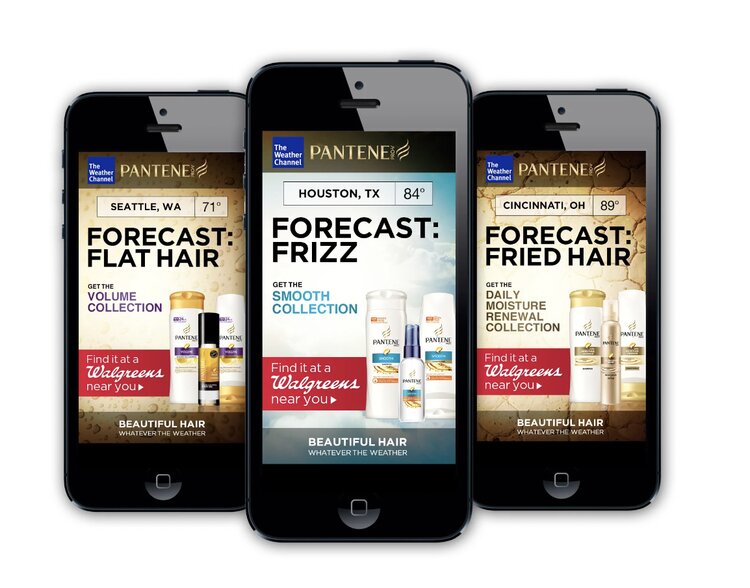
Geotargeting software
Here’s a look at some of the major ad platforms and social networks that support geotargeting advertising software, to help you get started with your next campaign.
Google Ads location targeting
Google Ads lets you target ads to specific geographic locations where you want your ads to be shown. Your ads can show to people in, regularly in or who have shown an interest in your target locations. For example, if you own a restaurant in London and choose London as your targeted location, your ads can show to people in, regularly in or who’ve expressed an interest in London restaurants. For most Google Ads campaigns, you can choose the locations where you want to show up, like cities, countries or even specific radius targeting around a location.
Before you set up your Google Ads location targeting, you need to think about what you want to achieve. Broad geotargeting lets you target both ‘Presence’ and ‘Interest’, meaning it can help you reach people who are not only in your targeted locations, but have shown interest in them. This gives you the ability to capture more conversions, clicks and impressions.
You can choose Your Google Business Profile locations. Google Ads may also suggest related locations based on your settings. You can target and edit bulk locations, and even select locations to exclude. The software makes it easy to ensure that you focus your advertising on the right customers
Facebook geotargeting advertising
Facebook location targeting enables you to create highly targeted campaigns with its Ads Manager. You can target users based on their country, region or city. You can also target free trade areas, emerging markets and more. There are multiple ways to refine your audience by location, such as people living in or recently in a location, or even people who are travelling in the location.
All you need to do is enter the geographic information such as the address or target location, specify the information for who you want to target, such as gender, age, languages, demographics, interest or behaviours. Your Facebook geotargeting ads are published according to these settings. Facebook will monitor your geo ad performance and will even reallocate budget to ensure you deliver more ads in best-performing locations. To set up location targeting in Facebook, get started easily through Ads Manager.
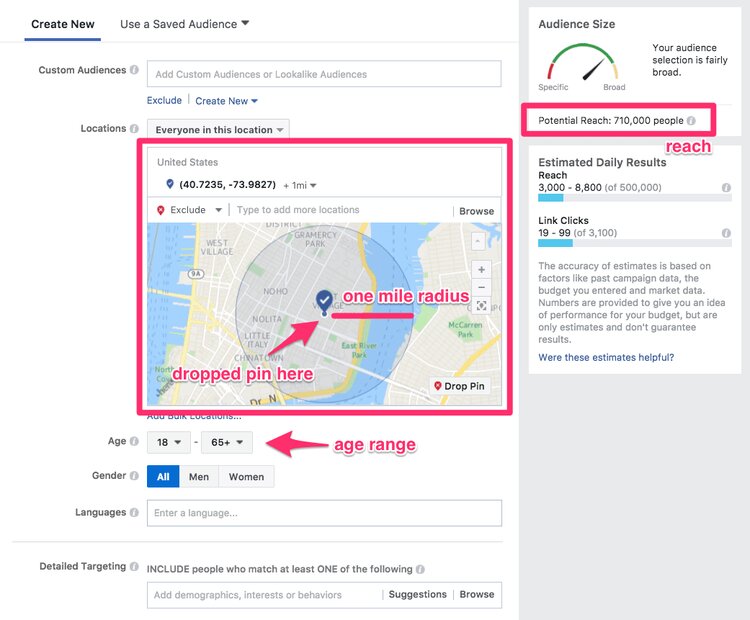
Instagram location targeting & geotags
You can use Instagram location targeting and geotags to boost engagement with Instagram followers. An Instagram geotag is simply a geographic location tagged in your Instagram story or post. Adding a geotag to your post allows it to live in the tagged location. When other users search for that geotag or click on another photo, your post will be found.
Instagram posts with a geotag receive a whopping 79% more engagement than those without any. You can create an attractive post using curated free templates for social media and tag your location to it. Since Facebook and Instagram are integrated, the geotags from Facebook are synced to Instagram. To create a geotag on Facebook it’s super easy to then utilise it in Instagram. It’s easy to get started with setting up a business account on Instagram.
LinkedIn geotargeting advertising options
LinkedIn has expanded its options for geotargeting advertising within its Advertising Manager Program. When building your new campaigns, you will notice that the geographic targeting capabilities have expanded to nearly three million global locations. This includes countries, cities, DMAs, states, counties, metro areas and more.
You can also target by audience attributes such as company, job, interest, traits and more. Or you can target using custom audiences you’ve created using Matched Audiences. These LinkedIn geotargeting options are helping businesses and advertisers broaden the reach they have for their marketing.
To get started with LinkedIn location targeting options, simply choose a recent or permanent location, then select the include option to select the locations you want to target. Alternatively, you can exclude regions that you want to ignore.
Snapchat location targeting
Snapchat location targeting is a good option if your audience is a younger demographic. It enables you to target based on locations such as countries, states, regions, metros, postal codes or addresses. It also offer radius targeting as a function, by inputting an address or choosing a latitude and longitude pairs
In addition, Snapchat lets you target a specific type of location, such as music venues, beaches, car dealerships, movie theaters and many more. This is helpful for businesses who want to advertise based on an activity, for instance, an ice cream parlour in California could target geo ads to anyone on a beach nearby.
Twitter geolocation targeting
Twitter geotargeting lets you target your geo ads towards specific countries, regions, metros, cities, postal codes or a radius around a location. The tool lets you focus on people in specific locations or who speak certain languages, to achieve your advertising goals. Together with age and gender targeting, Twitter geotargeting help you reach the right audience.
It’s easy to set up Twitter geolocation targeting. Simply navigate to the targeting section of campaign setup, scroll to demographics, and within the location section, input the geolocations you want to target. Alternatively, you can target a radius of 1 miles to 50 miles around a location.
Examples of geotargeting advertising & marketing
Here are some examples of brands using geotargeting advertising and marketing campaigns to great success. It’s easy to see how your business could benefit from implementing the technology along with other location-based solutions such as geofencing.
Burger King
Using geotargeting and geofencing combined, Burger King offered one-cent Whopper burgers to anyone who downloaded their app then ordered a burger within 600 feet of their rival restaurant, McDonald’s. The geoconquesting campaign was designed to redirect customers away from McDonald’s and to promote Burger King’s order-ahead feature in their app. The results were seriously impressive. During the Whopper Detour, Burger King saw a whopping 1.5million app downloads, 3.5 billion media impressions, and the highest foot traffic they had seen in years.
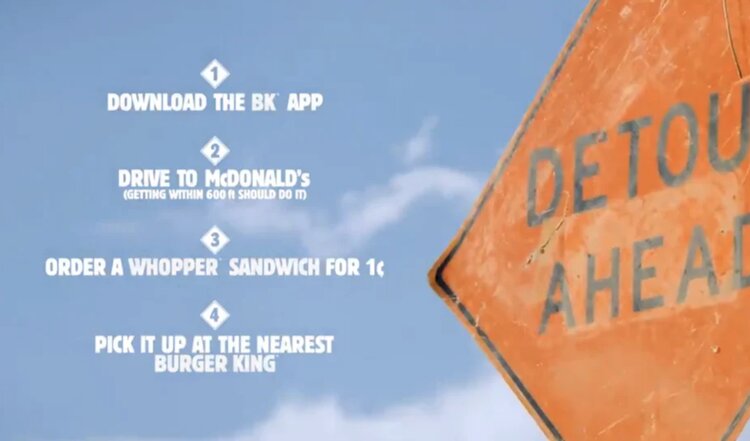
Urban Outfitters
Urban Outfitter used mobile location data to gain insights about their audience and deliver more relevant messages based on their users real-time location. For example, they sent geotargeted ads in the form of push notifications promoting party wear to women who had recently visited nightclubs and bars. By using a combination of email, in-app messages and push notifications, they saw a 146% increase in revenue and a 75% boost in conversions.
Nathan’s Famous geotargeting advertising
The famous hot dog brand partnered up with an ad agency that generates paid Facebook ads and Instagram ads for restaurants, to create geotargeted ads based on what was currently trending, then targeted people closest to their nearest location. After one month, more than 100,000 customers within a 4 mile radius saw the campaign. The geo ads were 10 times more efficient than traditional mailers and had a lower cost per click than other ads.
Get started with location targeting today
PlotProjects can assist you with the execution of your local marketing needs. Let digital advertising empower your local store and branches. Our specialists are ready to help you to advertise on the leading digital channels with the most effective advertising formats, so you can focus on running your business successfully.
Our SDK, APIs and dashboard offer all the tools you need to build accurate and efficient location functionalities into your mobile apps. We assist local retail with their local advertising needs and reach new customers with locally optimized and personalized digital advertising campaigns.
To speak to us about how our solutions can work for you, contact us today.
Want to learn more?
Get in touch with us!
